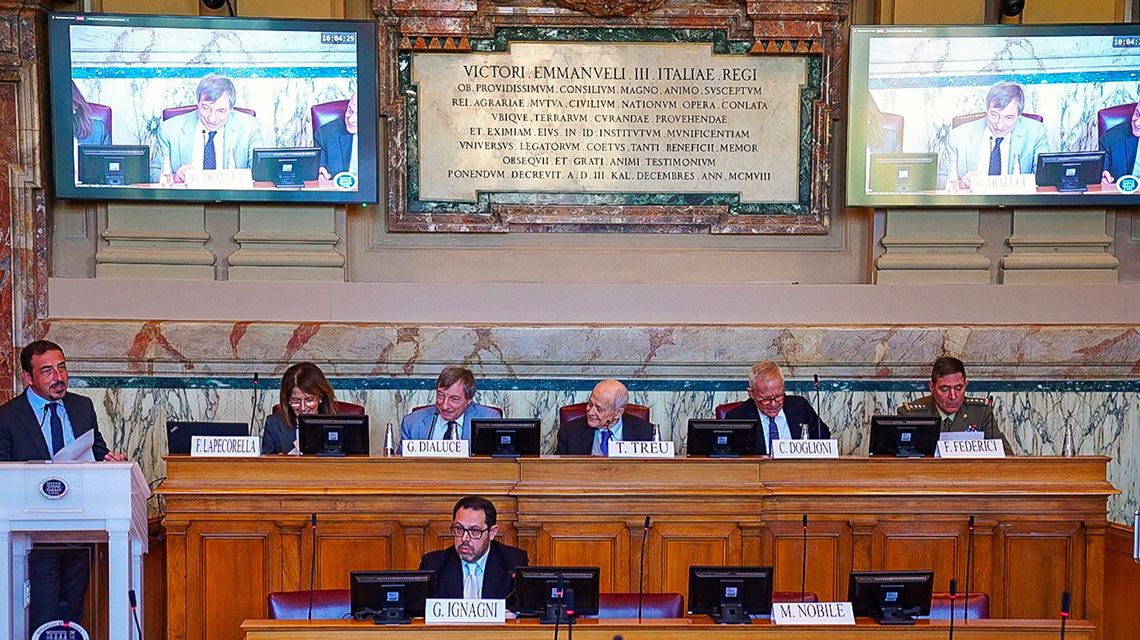Italian National Agency for New Technologies, Energy and Sustainable Economic Development

Security: INGV-ENEA agreement for the protection of critical national infrastructures
Technologies to prevent damage to strategic services for the Country will be developed
Developing technologies to monitor and analyse the physical risk of critical national infrastructures is the subject of the Agreement signed in Rome by President of ENEA Gilberto Dialuce and President of the INGV Carlo Doglioni, during an event at the CNEL headquarters attended by representatives of institutions and companies in the sector, including the President and the General Secretary of the CNEL, respectively Tiziano Treu and Francesco Tufarelli.
Among the key points of the agreement is the Italian Center for the safety of strategic infrastructures EISAC.it, born from the collaboration between ENEA and the INGV and included by the relevant UN office in the list of the 24 best technological structures globally for the management of natural disasters. The EISAC.it Center offers advanced services like territorial risk analysis, simulations of natural disaster scenarios and their impact on networks, collection and analysis of satellite data, creation of territorial databases and weather, climate and oceanographic forecasting systems. A complex activity built around scientific research conducted by skilled professionals with cutting-edge technologies, to provide risk analysis and forecasting services on strategic infrastructures throughout the national territory.
“Italy is too vulnerable to natural hazards and we forget past calamitous events too easily: a conflict between remembrance and oblivion we deal with every day, as late philosopher Remo Bodei reminded us. Earthquakes, landslides, eruptions, tidal waves, floods, gaseous emissions and ionizing radiation are natural phenomena that will always occur. Earthquakes will strike Italy again and we must ensure effective disaster preparedness. It is therefore essential to protect national infrastructures", said Carlo Doglioni, President of the INGV.
“This Agreement is part of the CER (Critical Entity Resilience) Directive, which must be implemented by the Member States through legal provisions that translate the strategic indications contained therein into actions, integrating them into the different national policies. The goal is to increase countries’ awareness of these issues and reduce citizens’s exposure to the damage that the lack of infrastructure and primary services can cause", explained Salvatore Stramondo, Director of the INGV National Earthquake Observatory (INGV-ONT) and contact person of the Institute for EISAC.it.
“"ENEA has long identified the critical infrastructure sector as a central asset for the development and application of skills in the fields of engineering and ICT models and technologies", pointed out ENEA President Gilberto Dialuce. “The CER Directive – he said – considerably broadens the panorama of strategic infrastructures and services and identifies the primary objective in the development of their resilience. We are ready to face this new challenge , which requires a collaborative approach to ensure systemic infrastructure protection ".
“Decision Support Systems is among the most prominent technologies developed by ENEA in this sector. Its aim is to monitor and analyse the risk of critical infrastructures, viewed in their interdependence, in case of adverse natural events, and provide support in managing correlated crises”, pointed out Maurizio Pollino, ENEA contact person for EISAC.it.
The Ministry of the Interior defines "National Critical Infrastructures" as "the material resources, services, information technology systems, networks and infrastructure assets so vital to the Nation that their incapacity or destruction would have a debilitating impact on crucial functions of society, including the supply chain, health, safety and economic or social well-being of the State and the population". It follows that integrity, protection from physical risk and resilience ofthe entire national services system are strategic issues, especially in light of the changing climate conditions, the impacts of hydrogeological and seismic phenomena and the aging of the structures.
